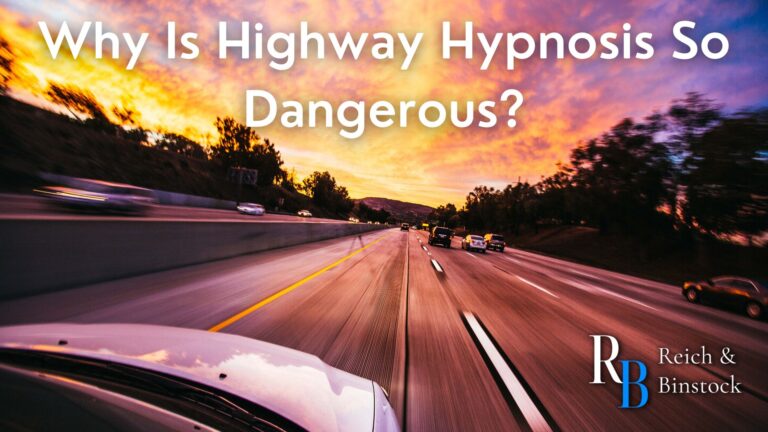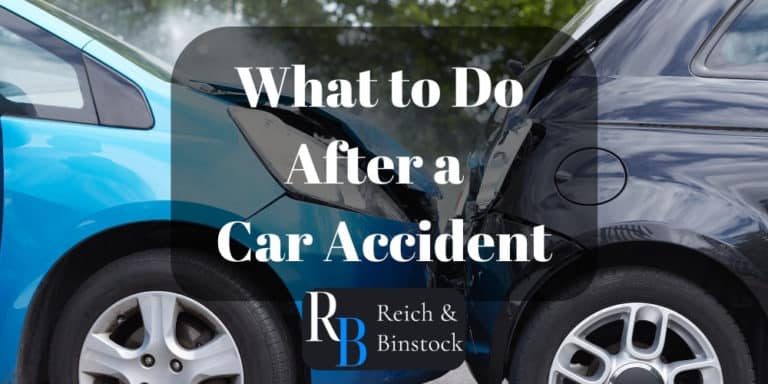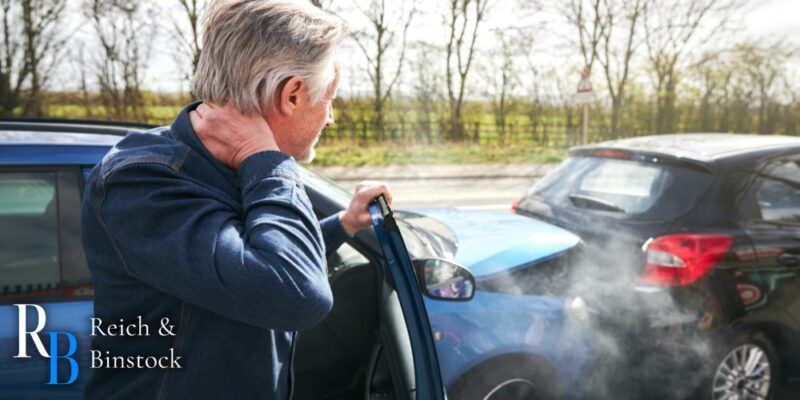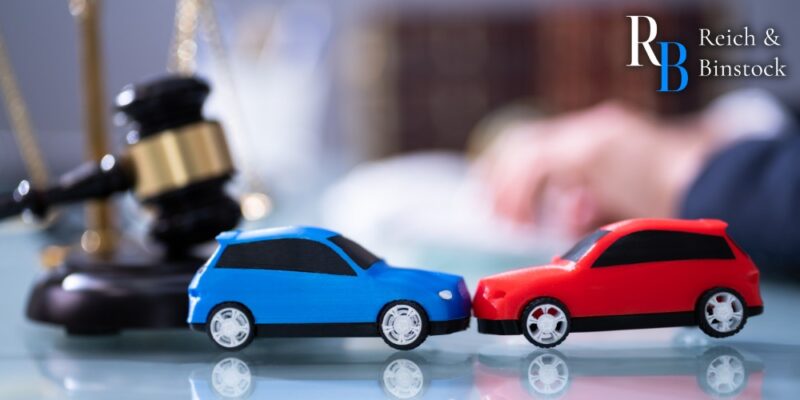CHAIN REACTION AND PILE-UP ACCIDENT ATTORNEYS IN HOUSTON
What Is a Pile-Up Car Accident?
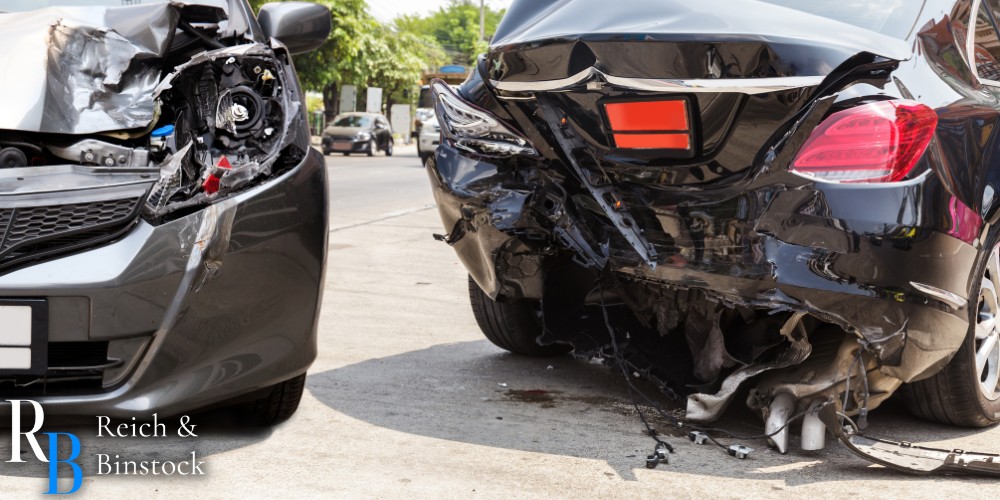
A pile-up accident gets its name from vehicles piling up following the initial collision. Multiple impacts can cause vehicle damage and result in injuries in pile-up accidents. They most commonly occur on freeways, highways, or roadways where people drive at a moderate to high rate of speed. Another common term for pile-up accidents is “multi-vehicle collisions.”
If you have been injured in an accident with multiple other drivers and vehicles, you need a Houston pile-up accident lawyer on your side. At Reich & Binstock, we have considerable experience handling Houston car accident cases. Our team will evaluate the facts of your case, build evidence to support your case, and ensure that you get the best possible outcome when you file a claim. To schedule your free consultation with us, please call our Houston office at 713-622-7271 today.
Is a Pile-Up Accident the Same as a Chain Reaction Accident?
Yes, pile-up accidents are the same as chain reaction accidents. A chain reaction accident is where three or more vehicles are involved in a series of collisions, commonly caused by the initial collision.
What Causes Chain Reaction Car Accidents?
Motor vehicle accidents aren’t uncommon in Texas, especially in heavily populated and urban areas. Accidents involving multiple vehicles occur frequently during mid-day traffic, although there are a variety of reasons why a multi-car crash would occur, including:
- Failing to yield when switching lanes
- Distracted driving, such as texting and driving
- Driving under the influence of drugs or alcohol
- Failing to stop at a stop sign or red light
- Suddenly breaking or stopping short
- Failing to yield to pedestrians
- Not using a turn signal
- Aggressive and reckless driving, such as speeding and tailgating
- Poor visibility
- Road conditions due to heavy rain or winter weather
Accidents involving multiple vehicles can result in serious injuries for all parties involved. It only takes one driver to slam on their brakes to create a chain reaction of vehicles colliding into each other.
What Are the Most Common Injuries in Chain Reaction Crashes?
Injuries from a chain reaction car accident can be serious. The injuries can range from minor bumps and bruises to life-threatening injuries. Common injuries include:
- Spinal cord injuries
- Broken bones
- Dislocated joints
- Concussions and other traumatic brain injuries
- Internal injuries
- Sprains and strains
Who Is Responsible for a Chain Reaction Car Accident?
Each car accident is different. It’s not always easy to prove which party caused the accident when multiple vehicles are involved. There are generally several different scenarios in which fault can be determined for chain reaction accidents.
In most chain reaction accidents, the driver that caused the first accident is generally the at-fault party. For example, if one hits the rear end of another vehicle, the impact of the initial crash results in the second driver colliding into the rear of another vehicle, injuring the third driver. In that situation, the first driver would be responsible for the collision.
However, that is not always the case. A second example would be, say a driver suddenly stops without warning or flashing their brake lights, the vehicle behind them doesn’t have time to react and collides with that vehicle. The crash’s impact causes the first driver to crash into the vehicle in front of them. The at-fault party in this situation would be the driver that failed to use their lights to warn the driver behind them.
How to Prove Negligence in a Pile-Up Car Crash
Negligence is proven by showing that the driver was reckless or careless, resulting in your accident, injuries, and losses. Proving negligence will require gathering evidence showing that the actions of the other driver(s) fall in line with the four elements of negligence.
Several forms of evidence could be used to establish negligence, including:
- Party admissions- sometimes, the at-fault party will admit responsibility for the accident. Admission can be made directly to the injured party or to the responding police officer. The person overhearing the admission could testify to it if the case goes to trial.
- Video evidence- videos of the accident can be some of the most powerful evidence of negligence. Some of the uncertainty surrounding the accident can be eliminated when a jury visualizes the accident and what occurred.
- Medical records- this is one of the most important pieces of evidence when establishing damages in a car accident case. Medical records can not only establish the severity of injuries, but also prove the expenses of the medical care received.
- Criminal convictions- some, not all, traffic accidents result in a ticket or arrest. When this happens, evidence that the other driver committed a violation at the time of the crash could be used to prove negligence.
- Photographs- photo evidence can be helpful in many ways. The jury could get insight into the severity of the injuries sustained. Images of the accident scene may help them understand how the crash occurred. Lastly, pictures of not only your vehicle but the other vehicles could determine the nature of the accident.
Proving Liability in a Chain Reaction Accident
With the number of drivers and vehicles involved in chain reaction accidents, determining fault and liability can be complex. Fault is typically assigned to the negligent party, making them liable for damages caused by the crash. When trying to determine fault for a chain reaction crash, the car accident attorneys and the insurance companies will likely consider several factors, including:
- Police report- having an official police report may assist the attorney in proving fault for the crash. The responding police officer will review what happened and try to gather evidence, such as an assessment of vehicle damage, where the vehicles came to a resting place, and statements from all involved parties.
- Witness statements- another part of the responding officer’s job is to speak with witnesses and take down their statements. Witnesses may be able to point out the driver that was distracted or speeding prior to the accident. Make sure to write down names and contact information for any witnesses that would be willing to talk to you or the police about what they saw.
- Accident reconstruction- when determining liability is extremely complicated or there weren’t any credible witnesses present at the time of the accident, an accident reconstruction expert may be needed. The reconstructionist may be able to determine who caused the initial crash that caused the rest of the collision.
Fault is ultimately determined by the evidence gathered from the crash scene and additional evidence gathered after, including traffic or surveillance camera footage showing the events that led up to the accident.
In some cases, chain reaction car accidents can be caused by multiple drivers that will share the liability for damages.
Compensation for a Chain Reaction Collision
Financial justice begins with filing a personal injury claim. You may receive compensation for the expenses incurred and losses you’ve experienced. An experienced chain reaction attorney can seek compensation, such as:
- Present and future medical expenses
- Lost income
- Loss of earning potential
- Loss of enjoyment of life
- Emotional distress
- Pain and suffering
- Rehabilitation expenses
Even if you only experienced minor injuries, you might still be able to receive compensation. The compensation amount will depend on the severity of the injuries you sustained in the accident and whether you can prove negligence.
Do I Need an Attorney for a Chain Reaction Crash?
Determining fault in a chain reaction accident can be challenging in many cases. You may want to hire an attorney to help you determine fault. A Houston car accident attorney will rely on the police report, witness statements, and vehicle recreationists to help prove who is at fault for the chain reaction accident and why. This is important in helping you prove fault, determining who needs to be included in the lawsuit, and also receiving compensation for any injuries, expenses, or losses that you sustained.
Contact the Houston Car Accident Attorneys with Reich & Binstock
If you or a loved one were injured in a pile-up car accident, it’s important to hire an attorney to assist you with your personal injury claim. The experienced personal injury attorneys at Reich & Binstock can help you determine who is at fault, file a personal injury claim, and help you receive the compensation you deserve. Contact us today at 713-622-7271 for your free consultation.
There is never a fee unless we recover on your behalf.

















